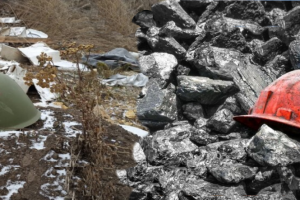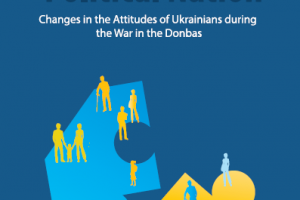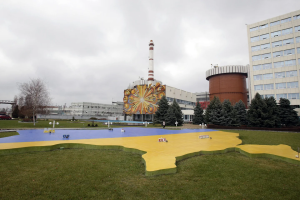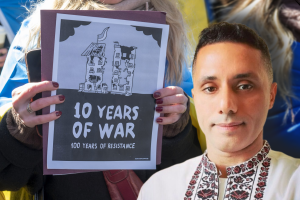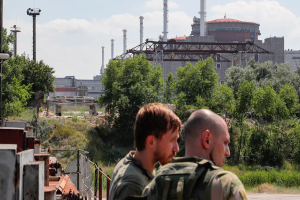‘Ze’ support: what does the final presidential election results in Ukraine reveal?

Ruslan Kermach,
a freelance political analyst
and an associate expert
at the Ilko Kucheriv Democratic Initiatives Foundation
(DIF) in Kyiv, Ukraine
Volodymyr Zelenskiy won the Ukrainian presidency with an unprecedented percentage of the democratic vote. Though he certainly maintains a base of loyal supporters, polls suggest that many second-round votes for Zelenskiy were actually protest votes against the incumbent President Petro Poroshenko.
Comedian-turned-candidate Volodymyr Zelenskiy gained a landslide victory in the second round of the Ukrainian presidential election on April 21st, having received somewhat more than 73 per cent of votes, according to a preliminary count of all the electronic protocols by the Central Election Commission. He beat his contender – the incumbent President of Ukraine Petro Poroshenko – by nearly 50 per cent of the vote, winning with an unprecedented margin that has never been seen before in the history of second-round elections in Ukraine.
The overall voter turnout in the Ukrainian elections held this Sunday was around 62 per cent, suggesting a real vote of confidence in the newly elected President of Ukraine calculated to be about 45 per cent of the total number of Ukrainian citizens entitled to vote.
It is worth mentioning that the now president-elect of Ukraine managed to secure his leadership in all major macro-regions and all regions (oblasts) of Ukraine, with the exception of the Lvivska oblast. In most of the regions in the south and east of Ukraine, his results exceeded those of his competitor many times over.
Such uniformity of support for Zelenskiy’s candidacy is an important indicator. It makes it possible to claim that the sustained electoral cleavage evident over several of the presidential campaigns in Ukraine until 2014 has been overcome once again. Back then the main contenders in the second round of the presidential election often had the predominant support of either the southern and eastern regions of Ukraine (Viktor Yanukovych), on the one hand, or of the central and western regions of the country (Viktor Yushchenko/Yulia Tymoshenko), on the other.
For the second consecutive electoral cycle, the winners of the presidential election in Ukraine in 2014 (Poroshenko) and 2019 (Zelenskiy) have relied on a more even distribution of their electoral support base. Such a distribution is quite important from the standpoint of ensuring the nationwide legitimization of the newly elected head of state, surpassing just a narrow regional validation. This, in turn, should contribute to the higher sustainability of presidential power in Ukraine.
Protest voting “against” rather than “for”
Despite the more than convincing public support that Zelenskiy received through the second round of the presidential elections in Ukraine, one should be more critical while evaluating the electoral base of his support, as well as the core motivations of those who voted in support of him on April 21st.
A recent public opinion poll conducted by Rating Group Ukraine in between the two rounds of the presidential election has revealed that some 41 per cent of Zelenskiy’s electorate opted for him not because they supported his candidacy per se, but because voting for him provided an opportunity to cast the ballot against the incumbent president of Ukraine, Poroshenko.
Thus on the eve of the second round of election, the traditional principle of voting “against”, rather than “for” – also known in Ukraine as voting for the “lesser evil” – clearly manifested itself. In other words, a significant part of Zelenskiy’s voters were driven in their electoral behavior primarily by the willingness to first and for most oust the acting president of Ukraine Poroshenko, or at least to express their vote of no confidence against him. Apparently, this segment of Zelenskiy’s ad-hoc supporters who formed his second-round “broad electoral coalition” included voters of those opposition presidential candidates who did not make it into the second round following the first round of elections on March 31st – namely Yulia Tymoshenko, Yuriy Boyko, Anatoliy Hrytsenko, Igor Smeshko, Oleg Lyashko and a number of other lesser-rated opposition candidates.
The fact that Zelenskiy’s final result of 73.23 per cent is to much extent comparable to his political opponent Poroshenko’s personal anti-rating among Ukrainians might also be an implicit indication that this second round reflected a great deal of protest voting behavior. According to the polling data as of March 2019, 69 per cent of Ukrainian citizens claimed to have no trust in the incumbent president of Ukraine Petro Poroshenko. There is a high probability that it was this public distrust of Poroshenko which converted into the votes in support of his main rival during the second voting round.
Certainly Zelenskiy still maintains his own electoral support base of those voters who primarily saw him as the most worthy and suitable candidate for the presidency. However, this figure is noticeably less than the level of support that the winner actually received in the second round of the election and might be closer to the amount of votes he received during the first stage of voting one month ago.
Fragile vote of confidence
The extended public support of more than 73 per cent of voters obtained by the candidate Zelenskiy at this stage is largely a kind of “loan” that the newly elected president has yet to “pay back” in the form of decisive actions, weighted and efficient policies and other decisions capable of meeting the most relevant public requests and expectations of Ukrainians.
The task is not an easy one, considering both the contradictory nature of his voters’ demands as well as the limited constitutional power of the Ukrainian presidency, especially in the areas of social and economic policy, combined with the absence of a loyal majority in the Ukrainian parliament.
Thus in order to efficiently deliver on his promises the newly elected president of Ukraine will need either to quickly find common ground with the acting parliament and government of Ukraine till this fall when the next parliamentary elections are scheduled (October 27th) or to look for mechanisms of fast-track rebooting the acting parliament in order to create a more loyal political representation under a new legislature and to get the backing of a newly formed national government.
Without promptly finding the means of addressing the most pressing issues for Ukrainian citizens, the new president risks repeating the sad experience of his predecessors in the past, losing broad public support just as rapidly as he has been gaining it over the recent months.
First publihed in New Eastern Europe
_______________________________
This analytical material was presented by the Ilko Kucheriv Democratic Initiatives Foundation as part of its project implemented under the USAID/ENGAGE activity, which is funded by the United States Agency for International Development (USAID) and implemented by Pact. The contents of this analytical material are the sole responsibility of Pact and its implementing partners and do not necessary reflect the views of USAID or the United States Government.


